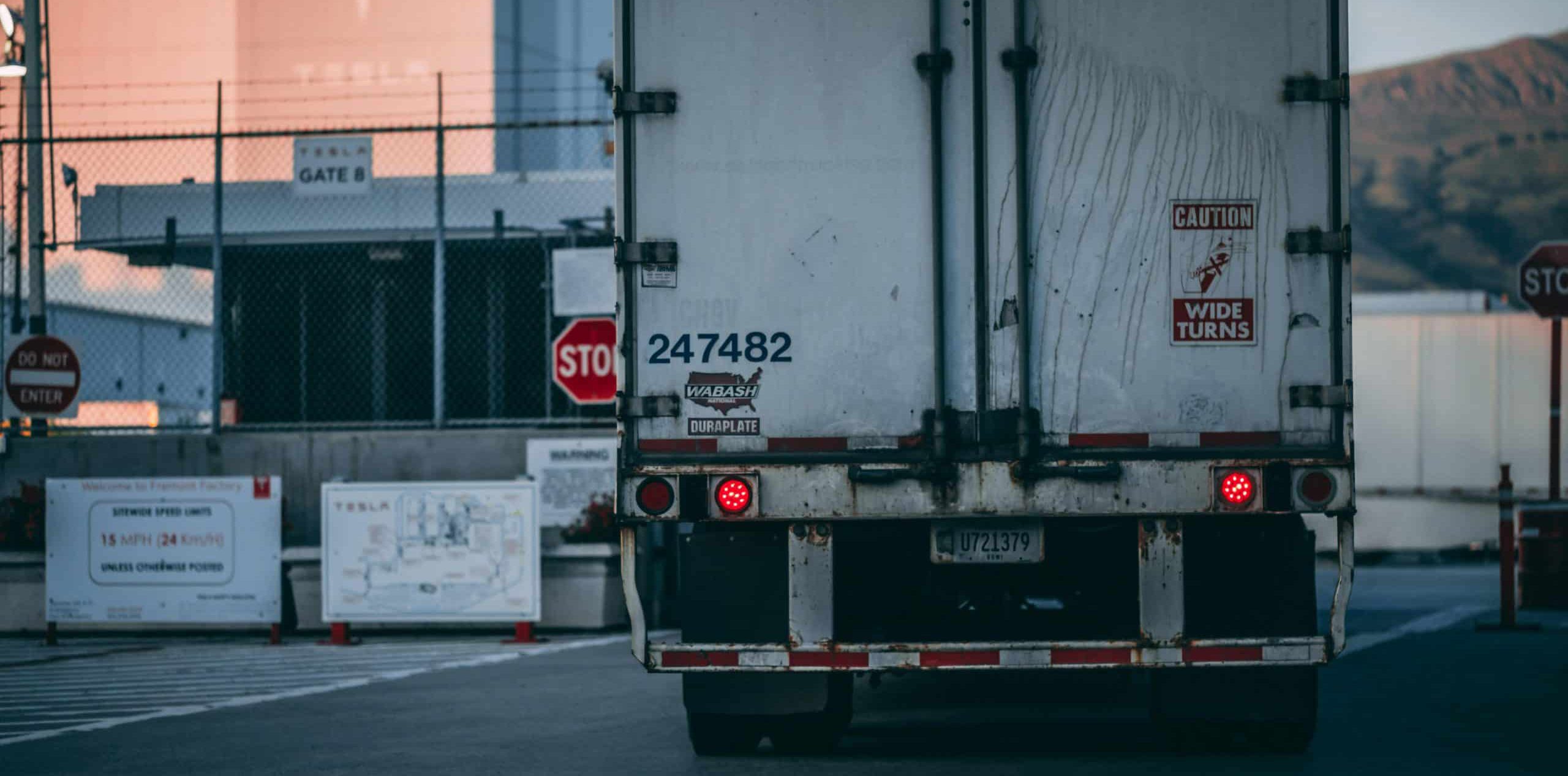Route Optimisation Software’s Role in Compliance and Safety in the Transportation Industry

Route Optimisation’s Impact on Compliance and Safety
Today, businesses need to run at a fast, efficient pace, with the transportation industry playing a vital role in keeping supply chains moving in this way.
However, alongside this efficiency, ensuring compliance with regulations and maintaining safety standards is essential, with there being a variety of rules which businesses are legally bound to follow. Route optimisation software has emerged as a key tool in addressing these concerns, offering solutions that not only streamline operations but also ensure safety and compliance measures are being met.
Compliance Regulations in Transportation
There are a wide variety of compliance regulations in transportation, many of which are particularly stringent as they are designed to ensure the safety of goods, drivers, and the general public.
Failure to adhere to these regulations can lead to severe consequences, including fines, penalties, and even the revocation of operating licenses.
So, to help you navigate compliance regulations, here is a run-through of some of the most important:
Hours of Service (HOS) Regulations:
Hours of Service regulations dictate the maximum amount of time commercial drivers can spend behind the wheel without rest. These regulations aim to prevent driver fatigue, a leading cause of accidents in the transportation industry. Non-compliance with HOS regulations can result in hefty fines and jeopardise the safety of both drivers and other road users.
Vehicle Weight and Size Restrictions:
To maintain road safety and infrastructure integrity, transportation companies must adhere to strict vehicle weight and size restrictions. Overloaded or oversized vehicles pose significant risks, including road damage and increased braking distances, compromising safety for all road users.
Hazardous Materials Transportation:
The transportation of hazardous materials comes with its own set of regulations to prevent accidents and protect the environment and public health. Failure to comply with these regulations can lead to some disastrous consequences, including environmental contamination and public health hazards.
Enhancing Safety in Logistics
When it comes to enhancing safety in logistics, route optimisation plays a crucial role. By leveraging advanced algorithms and real-time data analysis, route optimisation software can:
– Minimise the risk of accidents by identifying the safest and most efficient routes.
– Reduce driver fatigue by optimising schedules and rest breaks in compliance with HOS regulations.
– Mitigate risks associated with hazardous materials transportation through specialised route planning and monitoring features.
How Can Route Planning and Optimisation Increase Truck Driver Safety?
Route planning and optimisation offer a variety of benefits for truck driver safety, leveraging data, technology, and real-time monitoring to mitigate risks and enhance operational efficiency.
Here are several ways in which route planning and optimisation contribute to truck driver safety:
Data:
Route planning and optimisation software utilise vast amounts of data to identify the safest and most efficient routes for drivers. By analysing factors such as traffic patterns, weather conditions, and road hazards, these tools can help drivers avoid potential risks, thereby reducing the likelihood of accidents.
GPS Tracking & Monitoring:
Integrating GPS tracking and monitoring capabilities into route planning software allows Fleet Managers to keep real-time tabs on their vehicles and drivers’ whereabouts. This not only enhances operational visibility but also enables proactive intervention in the event of emergencies or deviations from planned routes.
Vehicle Care:
Route planning and optimisation tools facilitate proactive vehicle maintenance by incorporating features such as daily walkaround vehicle checks and automated maintenance reminders. By ensuring that vehicles are in optimal condition before hitting the road, these tools help prevent mechanical failures and reduce the risk of accidents caused by vehicle malfunctions.
Easy Navigation:
Complex routes and unfamiliar territories can pose significant challenges for drivers, increasing the likelihood of navigational errors and accidents. Route planning and optimisation software provide intuitive navigation interfaces and turn-by-turn directions, simplifying the driving experience and reducing driver stress.
Factoring in Stops and Delays:
By factoring in stops, delays, and other potential disruptions into travel time calculations, route planning software helps drivers better manage their schedules and avoid rushing or speeding to meet deadlines. This promotes safer driving practices and reduces the risk of accidents caused by aggressive driving behaviours.
Regular Route Updates:
In dynamic environments where road conditions can change rapidly, regular route updates are essential for ensuring driver safety. Route planning and optimisation software continuously monitor traffic conditions and road closures, providing drivers with real-time updates and alternative routes to avoid potential hazards or delays.
Real-time Compliance Monitoring
Real-time compliance monitoring is a critical aspect of ensuring adherence to regulatory requirements within the transportation industry. Route optimisation software contributes to this by:
– Monitoring driver behaviour and adherence to HOS regulations in real-time.
– Providing alerts and notifications for potential compliance violations, allowing for immediate corrective action.
– Generating comprehensive reports and audit trails to demonstrate compliance to regulatory authorities.
By offering real-time visibility into compliance metrics, route optimisation software empowers transportation companies to proactively address issues and maintain regulatory compliance, thereby reducing the risk of penalties and operational disruptions.
Transportation Cost Savings
Route optimisation solutions not only enhance safety and compliance but also deliver significant cost savings for transportation companies.
By optimising routes, reducing idle time, and minimising fuel consumption, these solutions contribute to:
Reduced Maintenance Costs:
Efficient route planning and optimisation result in reduced wear and tear on vehicles, leading to lower maintenance costs over time. By minimising unnecessary mileage and optimising vehicle usage, transportation companies can extend the lifespan of their fleets and reduce the frequency of costly repairs.
Reduced Fuel Spending:
Optimising routes to minimise fuel consumption is a key feature of route optimisation software. By identifying the most fuel-efficient routes and optimising driving behaviours, such as speed and acceleration, these solutions help transportation companies reduce their fuel expenses and environmental footprint.
Brand Reputation
We live in an interconnected world, with consumers turning to peer recommendations more than ever. Therefore, maintaining a positive brand reputation is essential for the long-term success of any business.
Route planning and optimisation software contribute to an improved brand reputation by:
– Demonstrating a commitment to safety and compliance, thereby enhancing trust and credibility among customers and stakeholders.
– Providing real-time tracking and visibility into operations, fostering transparency and accountability.
– Delivering reliable and efficient service, resulting in higher customer satisfaction and loyalty.
Can Route Optimisation Software Help With Real-time Compliance Monitoring?
In short, yes!
Route optimisation software plays a crucial role in real-time compliance monitoring within the transportation industry. By leveraging advanced algorithms and real-time data analysis, these solutions enable transportation companies to monitor driver behaviour, adherence to regulatory requirements, and overall fleet compliance in real-time.
Through features such as GPS tracking, driver performance monitoring, and automated alerts, route optimisation software empowers companies to proactively identify and address compliance issues, thereby minimising the risk of penalties and operational disruptions.
What Are the Key Safety and Compliance Features to Look for in Route Planning and Optimisation Software?
When selecting route planning and optimisation software, it’s essential to consider the following key safety and compliance features:
Less pressure on drivers
At a high-level, route optimisation removes the guesswork from drivers as routes are automatically planned for accuracy and efficiency. This, alongside providing routes, timings, and recommended breaks, reduces the pressure on drivers and allows them to focus on delivering. This in turn reduces driver stress meaning they are less likely to feel the need to rush or make potentially dangerous, careless decisions.
Hours of Service (HOS) Compliance:
The software should offer the ability to set dynamic driver breaks so that businesses can ensure that drivers adhere to regulatory requirements and avoid violations.
Driver Performance Monitoring:
Driver performance monitoring features enable real-time tracking of driver behaviour, such as speeding, harsh braking, and excessive idle time, allowing for proactive intervention and coaching to improve safety and compliance.
Hazardous Materials Routing:
For companies transporting hazardous materials, the software should provide options to help comply with regulations governing the transportation of hazardous substances, minimising risks and ensuring compliance.
Vehicle Maintenance Tracking:
Automated vehicle maintenance tracking features such as daily vehicle checks help ensure that vehicles are properly maintained and can identify any potential issues before they become serious.
Challenges in Implementing Compliance and Safety Measures
There is always a chance that businesses will encounter challenges when it comes to implementing compliance and safety measures.
Firstly, keeping on top of ongoing evolving regulations poses a significant hurdle. With laws varying across regions and modes of transportation, ensuring universal compliance demands attention to detail. Additionally, the sheer volume of regulations can overwhelm businesses, leading to confusion and potential oversights.
Another common challenge is fostering a culture of safety throughout the organisation. Despite rigorous training and protocols, human error is always a risk factor. Overcoming complacency and instilling a proactive mindset among employees requires continuous reinforcement and leadership commitment.
Furthermore, resource constraints can be a roadblock to effective implementation. Budget limitations may hinder investment in advanced safety technologies or comprehensive training programs. Moreover, smaller companies may lack the bandwidth to navigate complex regulatory landscapes effectively.
To address these challenges, businesses can adopt several strategies.
– Implementing robust compliance management systems can streamline regulatory adherence and facilitate timely updates.
– Investing in ongoing training and development initiatives empowers employees to make informed decisions and prioritise safety at all times.
– Collaboration with industry peers and regulatory bodies can also provide valuable insights and support for businesses.
– Prioritising compliance and safety not only mitigates risks but also fosters trust among stakeholders and enhances operational resilience in an ever-changing landscape.
Can route optimisation improve your business’s safety and compliance?
In conclusion, as the transportation industry continues to evolve, the importance of compliance and safety measures for businesses should not be underestimated. Route optimisation software has emerged as an essential tool in addressing these concerns, offering solutions that not only streamline operations but also enhance safety and compliance measures.
By leveraging advanced algorithms and real-time data analysis, route optimisation software helps businesses navigate complex regulatory landscapes and mitigate risks associated with non-compliance. From ensuring adherence to Hours of Service regulations to facilitating the safe transportation of hazardous materials, these tools play a pivotal role in promoting a culture of safety throughout the organisation.
Ultimately, prioritising compliance and safety not only minimises risks but also enhances trust among stakeholders, strengthens brand reputation, and contributes to the long-term success of transportation companies in a competitive landscape. By embracing route optimisation software as a cornerstone of their safety and compliance strategies, businesses can navigate the complexities of the transportation industry with confidence and resilience.
If safety and compliance are of uppermost importance to you and your business, then route optimisation should be a key system to add to your technology stack.
Contact our team of experts for a chat or a bespoke demonstration to understand how MaxOptra’s route planning and optimisation can support your business goals.
Maxoptra System
© MaxOptra, 2023. Privacy Policy and Cookies





